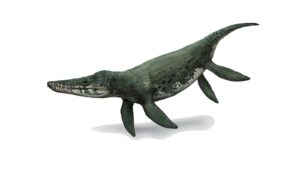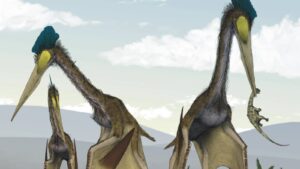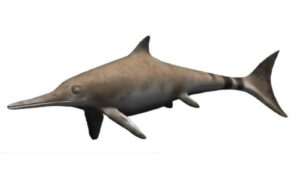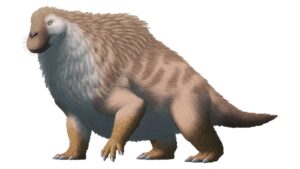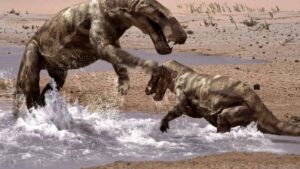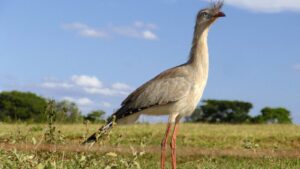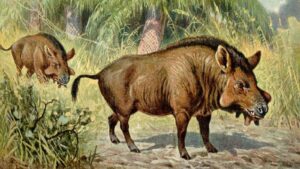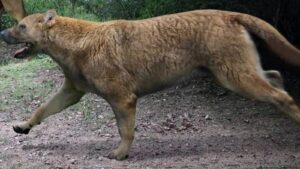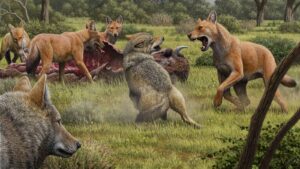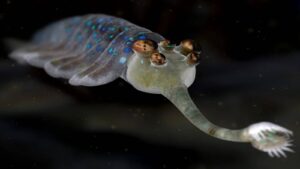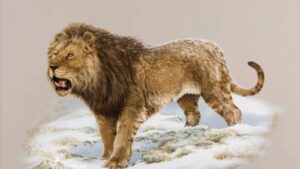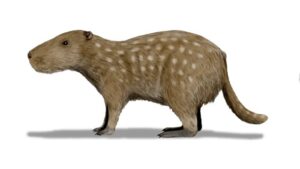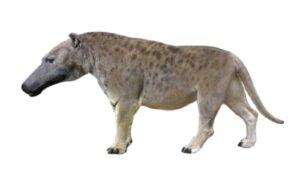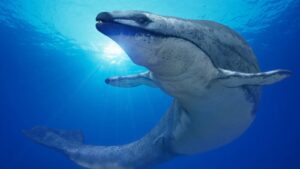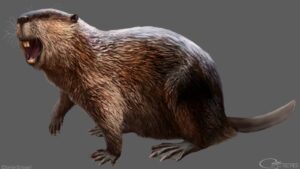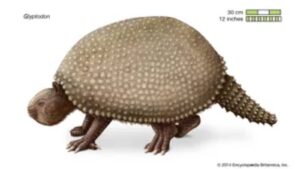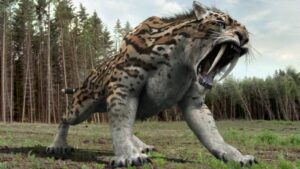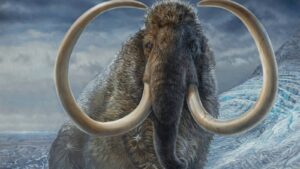Top 20 prehistoric animals you are glad are extinct
Summary
Top 20 prehistoric animals you are glad are extinct .Dinosaurs might get most of the glory in museums and on screen, however, “when dinosaurs roamed the Earth” is still a bit of a blip compared to the entire time the […]

Top 20 prehistoric animals you are glad are extinct .Dinosaurs might get most of the glory in museums and on screen, however, “when dinosaurs roamed the Earth” is still a bit of a blip compared to the entire time the planet has been around. There are more gigantic, toothy, and winged creatures that existed way back when that are straight-up terrifying. Here are the top 20 prehistoric animals you are glad are extinct.
Video: Top 20 prehistoric animals you are glad are extinct
Kronosaurus
Body-length estimates, largely based on the 1959 Harvard reconstruction, had previously put the total length of Kronosaurus at 12.8 meters. However, more recent studies, comparing fossil specimens of Kronosaurus to other pliosaurs, suggest that the Harvard reconstruction may have included too many vertebrae, exaggerating the previous estimate, with the true length probably only 9 to 10.9 meters. Their teeth exceed 7 centimeters in length and have 12-centimeter crowns. However, they lack carinae and the distinct trihedral of Pliosaurus and Liopleurodon teeth.
Video: Top 20 prehistoric animals you are glad are extinct
Liopleurodon
Despite needing to breathe air, Liopleurodon spent its entire life at sea and was unable to leave the water. Consequently, it would have given birth to its young alive and may have visited shallower water to breed. Until recently the longest confirmed adult specimen was 18 meters. Some paleontologists believe that it was rather swift in the water and could possibly swim as fast as a shark—which is about 25 miles per hour. Which is about 5 times faster than the fastest human swimming speed of 5.34 miles per hour.
Quetzalcoatlus
A study by Sankar Chatterjee, a Texas Tech University professor, claims that the Quetzalcoatlus would not have been able to fly. Instead, the pterosaur would soar and glide in a similar fashion as the albatross. Recent studies have estimated Quetzalcoatlus to weigh around 200 to 250 kg. They are huge, the size of a giraffe or a small plane, and have a beak that is a massive 2.5 meters long. So it’s large enough to eat humans, at least children, teens, and small adults.
Ichthyosaurus
This extinct genus was thought to have become one of the most terrifying extinct creatures early in the late Cretaceous, during the Cenomanian, about 95 million years ago. The ichthyosaurs thus would have disappeared much earlier than other large Mesozoic reptile groups that generally survived until the end of the Cretaceous. Mary Anning has been credited with the first discovery of ichthyosaur fossils. Although this is not entirely true, she did help to discover the first specimen of Ichthyosaurus to be known by the scientific community of London.
Moschops
They were heavily built plant eaters, and they may have lived partly in the water, as hippopotamuses do. They had short, thick heads and might have competed by head-butting each other. With a versatile palate and tough teeth, Moschops can be tamed for a unique ability: over time it can be accurately taught exactly which things to gnaw, increasing the likelihood of harvesting the specific resource its master desires. Even after taming, it will quickly flee when enemies are nearby.
Gorgonopsid
Gorgonopsid is the most dangerous extinct animal clade of non-mammalian synapsids from the Permian period. Gorgonopsians were quadrupedal predators with prominent canine teeth, and the largest species were the apex predators of their ecosystems. Like other non-mammalian synapsids, gorgonopsians were once described as “mammal-like reptiles,” due to their mix of mammalian and reptilian traits. This dinosaur, which looks like a monster animal, is really scary, and anyone should be glad of its extinction.
Phorusrhacid
This terror bird ranged in height from 1 to 3 m. Most phorusrhacids were very fast runners. All members possessed a large, sharp beak, a powerful neck, and sharp talons. However, even with these attributes, the phorusrhacids are often assumed to have preyed on relatively small animals that could be dispatched with a minimum of struggle. This is due to the fact that with the phorusrhacids’ beak proportions, the jaw could not generate a great deal of bite force with which to kill the prey.
Entelodon
This look-alike dinosaur but giant wildlife species was a fairly typical entelodont, with a large, bulky body, slender legs, and a long snout. Like other entelodonts, Entelodon had complete eutherian dentition. It had only two toes on each foot, and its legs were built for fast running. Its long, wide head was supported by a robust, short neck, and its cheekbones were greatly enlarged and protruded noticeably from the sides of the head. Though it was more closely related to hippos and whales than pigs, its skull was generally pig-like.
Read More: 20 most recent amazing discoveries that will blow your mind
Epicyon
Before dire and gray wolves roamed North America, an even bigger member of the canine family, the biggest member ever, in fact, was here. Epicyon lived between 12 and 6 million years ago and was the size of a grizzly bear, weighing as much as 300 pounds, according to the Florida Museum. That’s like two Newfoundland dogs or three Great Danes; that’s one amazing fact. Definitely this name should be included in the prehistoric park if there were any.
Dire wolf
Another big predator that’s commonly found in the La Brea Tar Pits, this wolf species was about the same length as the modern gray wolf, but it weighed quite a bit more—as much as 175 pounds. “Dire wolves had stronger jaws than today’s gray wolves, which meant that they were good at crushing bone,” says Lindsey. Nonetheless, they went extinct about 10,000 years ago, while their smaller cousins are still around—gray wolf populations have made a comeback in recent years thanks to reintroduction programs in places like Yellowstone National Park.
You will be amazed to know the most amazing top 10 prehistoric kingdoms list; here it goes:
Obapinia
Some creatures seem pretty creepy even though they’re not enormous—like this 3-inch arthropod: “Opabinia was a flat-bodied swimmer with five eyes and thirty swimming fins and a long tube sticking off the front of its face with what looks like a Venus flytrap on the end,” Lindsey says. It probably stuck that long tube down into the sandy seabed to catch worms. Find out the 11 wild animals you didn’t know were endangered today.
American lions
Along with short-faced bears, these lions were the biggest predators that were preserved in the La Brea Tar Pits. They went extinct about 13,000 years ago, around the same time as the mammoths and other large animals they would have preyed upon. Researchers imagine that the American lions, short-faced bears, and saber-toothed cats that ended up stuck in the asphalt at La Brea were attracted there by struggling prey animals and that as predators got stuck, more predators took an interest and ventured out into the sticky marsh.
Josephoartigasia monesi
How do you feel about rodents? Get a little creeped out by mice and rats? If so, the Josephoartigasia monesi might be the reason you’re glad you live now instead of 3 million years ago. At about 2200 pounds, the South American animal was the biggest rodent we’ve ever found remains of. It had giant front teeth that researchers think it probably used like elephants use their tusks, to root around in the dirt for food and maybe to fight off predators.
Andrewsarchus
This prehistoric animal was a large mammal that lived in the Paleogene period. It was an early artiodactyl hoofed animal, related to hippos and whales. One interesting fact is Andrewsarchus was discovered in Mongolia by naturalist Roy Chapman Andrews, after whom the genus was subsequently named. Andrewsarchus was a large-snouted predator, and, based on skull measurements, may have been the largest carnivorous mammal that ever lived on the earth.
Basilosaurus
Although its name, which includes the word ‘saurus,’ suggests that Basilosaurus was a reptile, it was later found to be a mammal. In fact, Basilosaurus was an early whale that lived in the Eocene epoch of the Paleogene period. Basilosaurus was around 21 m long and had a 1.5 m skull. Its jaws were full of long, dagger-like teeth. Analysis of its skull suggests that it may have had the strongest bite force of any animal! Basilosaurus is considered to have been common in the Tethys Sea. It was one of the largest, if not the largest, animals of the Paleogene. It was the top predator of its environment, preying on sharks, large fish, and other marine mammals, namely the dolphin-like Dorudon, which seems to have been their predominant food source.
Castoroides
It was a 2.5 m long giant beaver that lived in North America during the Pleistocene epoch. It is the largest beaver ever to have lived, but it had a small brain in proportion to its body size and may not have been as smart as its modern-day counterpart. Castoroides will not attack any entity unless aggravated to do so. Often, giant beavers who reside close to swamps will be forced to defend their territory and fight against wandering Dilophosaurs and invading Titanoboas. Sometimes they can be seen grouping up against larger predators like Carnos or swarms of smaller predators like Raptors and Terror Birds.
Glyptodon
It was a giant armadillo of the Pliocene and Pleistocene epochs. With a shell that was around 1.5 m in length and a total body length of around 3.3 m, it would have been an impressive sight walking through the South American forests and grasslands in which it lived. Hyaenodon is a genus of large carnivorous mammals that lived from the Eocene to the mid-Miocene epochs. The largest Hyaenodons were among the largest predators of their time.
Megatherium
It was a giant ground sloth that lived in South America from the Pliocene to the end of the Pleistocene. Thought to have weighed up to 4 tons and being 6 in length, it was one of the biggest animals of its day. Megatherium had large claws, which may have been used for burrowing rather than for climbing. This huge, hornless rhino lived during the Oligocene epoch. Weighing up to 20 tonnes and standing up to 4.8 m tall, it may even have been the largest land mammal ever to have lived.
Smilodon
Together, they have become known as ‘saber-toothed cats.’. The best-known is the Smilodon, which is also known as the ‘saber-toothed tiger.’. Three species of Smilodon have been discovered. The biggest, Smilodon populator, was bigger than a tiger and may have been the biggest cat species ever. Smilodons lived during the Pleistocene epoch and were found in both North and South America. What a relief that they don’t exist anymore! Scary animal indeed!
Read More: 50 Epic Moments with ANIMALS in SPORTS
Woolly mammoth
No list of prehistoric animals would be complete without the woolly mammoth! Mammoths were prehistoric members of the elephant family. They lived during the Pliocene and Pleistocene epochs. The woolly mammot is a species of mammoth that lived towards the end of this period. A similar size to the African elephant, the woolly mammoth was covered in fur—an adaptation for living during the Ice Age.
Are you happy with their extension? What happens if they are still alive today? Share your thoughts in the comment below.
